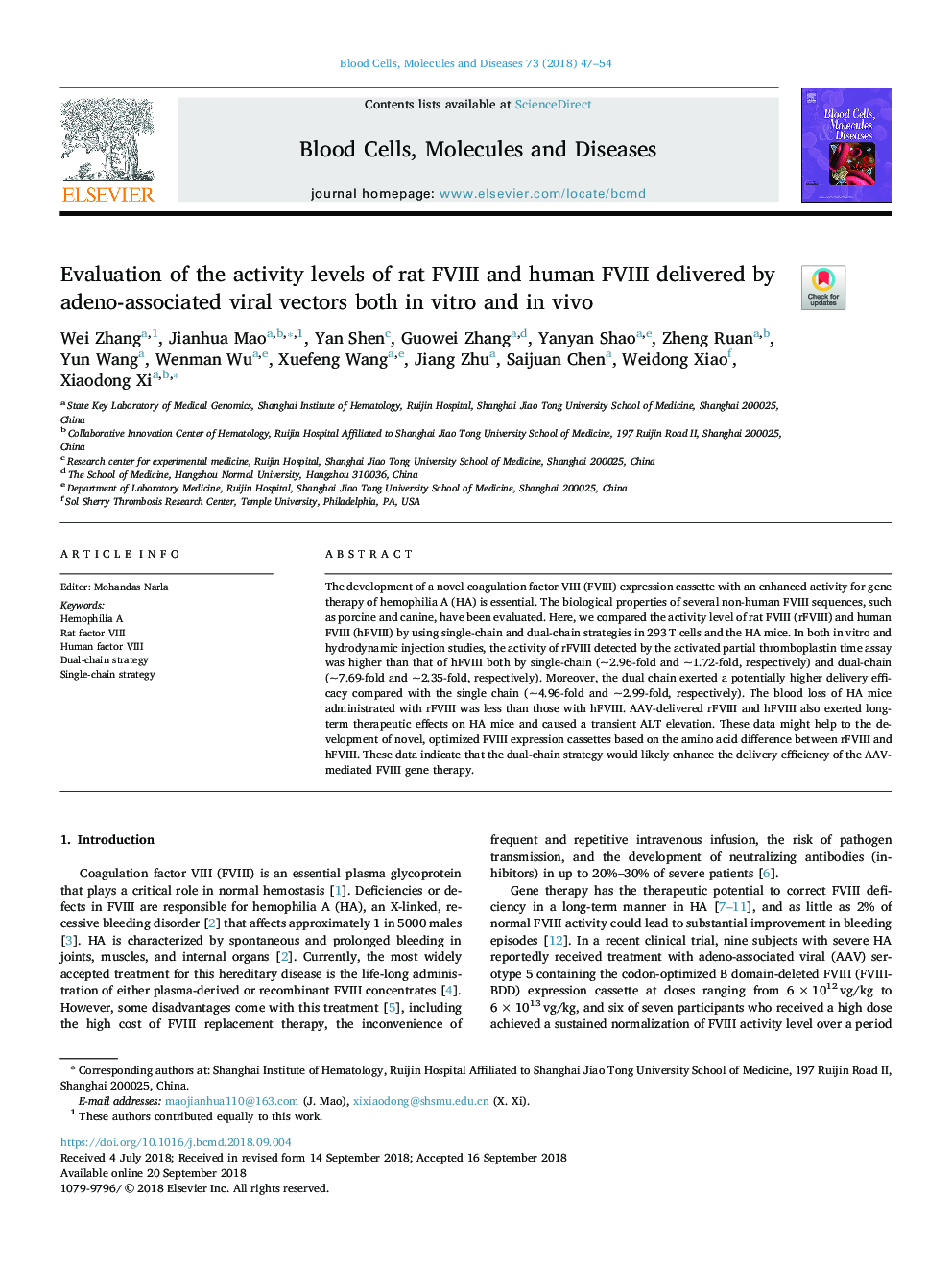| Article ID | Journal | Published Year | Pages | File Type |
|---|---|---|---|---|
| 10212515 | Blood Cells, Molecules, and Diseases | 2018 | 8 Pages |
Abstract
The development of a novel coagulation factor VIII (FVIII) expression cassette with an enhanced activity for gene therapy of hemophilia A (HA) is essential. The biological properties of several non-human FVIII sequences, such as porcine and canine, have been evaluated. Here, we compared the activity level of rat FVIII (rFVIII) and human FVIII (hFVIII) by using single-chain and dual-chain strategies in 293 T cells and the HA mice. In both in vitro and hydrodynamic injection studies, the activity of rFVIII detected by the activated partial thromboplastin time assay was higher than that of hFVIII both by single-chain (~2.96-fold and ~1.72-fold, respectively) and dual-chain (~7.69-fold and ~2.35-fold, respectively). Moreover, the dual chain exerted a potentially higher delivery efficacy compared with the single chain (~4.96-fold and ~2.99-fold, respectively). The blood loss of HA mice administrated with rFVIII was less than those with hFVIII. AAV-delivered rFVIII and hFVIII also exerted long-term therapeutic effects on HA mice and caused a transient ALT elevation. These data might help to the development of novel, optimized FVIII expression cassettes based on the amino acid difference between rFVIII and hFVIII. These data indicate that the dual-chain strategy would likely enhance the delivery efficiency of the AAV-mediated FVIII gene therapy.
Keywords
Related Topics
Life Sciences
Biochemistry, Genetics and Molecular Biology
Molecular Biology
Authors
Wei Zhang, Jianhua Mao, Yan Shen, Guowei Zhang, Yanyan Shao, Zheng Ruan, Yun Wang, Wenman Wu, Xuefeng Wang, Jiang Zhu, Saijuan Chen, Weidong Xiao, Xiaodong Xi,
